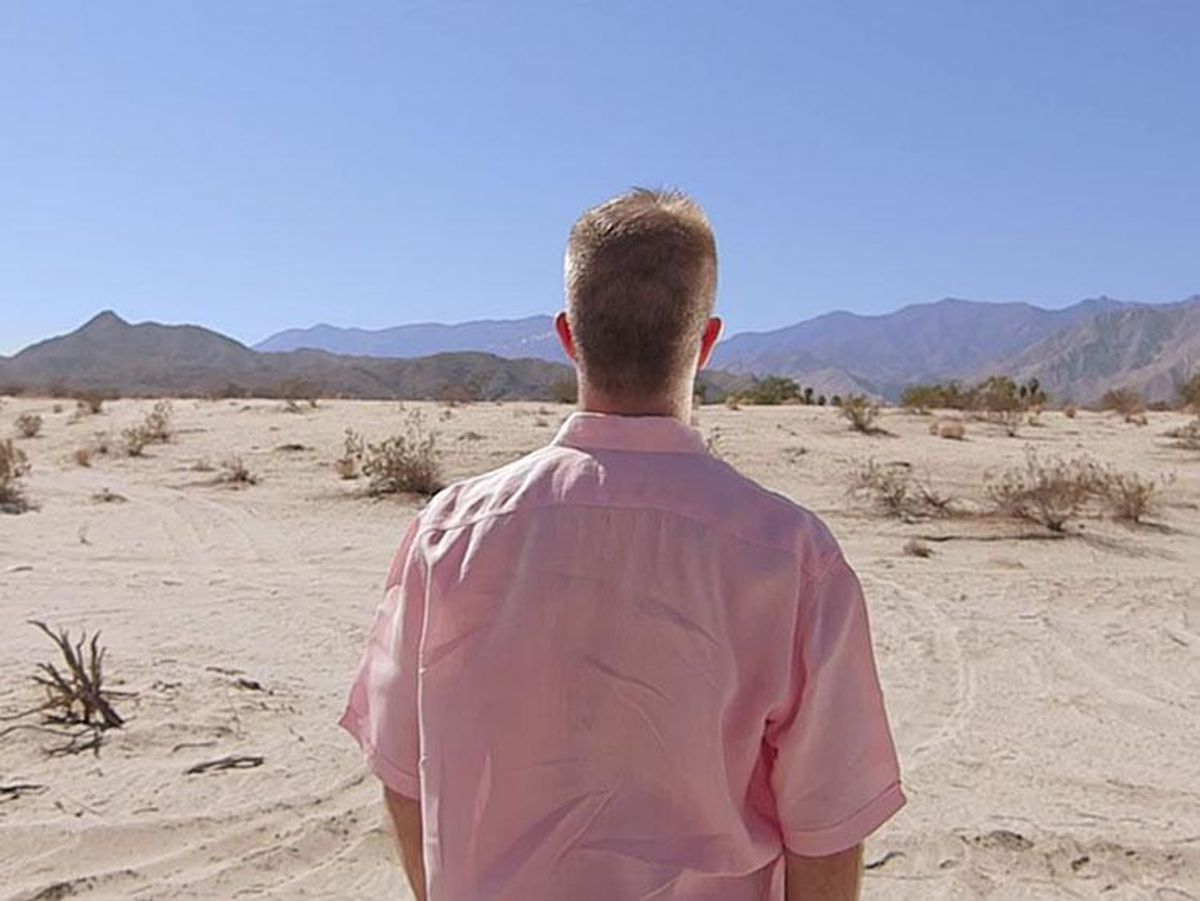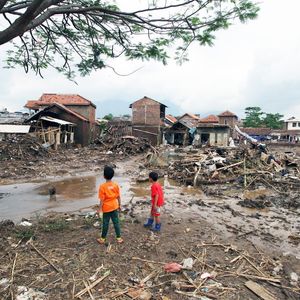[EDITOR'S NOTE: the film Desert Migration will crisscross the country, showing in 23 U.S. cities as one of AARP's Movies for Grown-Ups. The nationwide screenings will are scheduled for September 12-18, 2016 and are timed to coincide with the National HIV and Aging Awareness Day. The full schedule of the film's showings can be found here; watch the trailer below. ]
Desert Migration opens with images of a windfarm at dawn below the San Jacinto Mountains. It is goregous. As the massive propellers rotate, the red and orange lights reflect back to the wing-like blades, where the colors pop like fireflies in the cobalt desert sky. The image seems both sublime and unnatural—which makes it a fitting opening for a film about HIV-positive men moving to Palm Springs for their health and discovering a place simultaneously welcoming and alienating.
Text fills the screen, pushing aside the beautiful desert landscape, offering stark statistics and providing context for this Daniel F. Cardone documentary:
By 1995, the AIDS virus had killed 319,849 people
in the United States, and over 6 million worldwide.
In 1996, combination drug therapies became
available for the first time, resulting in a significant
decline and AIDS-related deaths.
People with HIV started to live longer
than anyone could have predicted.
But aging with this virus presented
a new set of unforeseen problems.
With their bodies damaged,
and an expensive, stigmatized illness to manage,
many people were forced to create new lives,
in new places…
Desert Migration tells the stories of thirteen HIV-positive men who moved to Palm Springs, California; what drew them, and how they’ve faired in the southern California desert town. Cardone composes the movie as a day in the life, following the men from their morning routines: brushing their teeth, drinking coffee or smoking to going to bed at night. Audiences are introduced to each man, but their stories blur together as they detail their histories and experiences. All are gay, HIV-positive, over fifty and mostly white. Still, there is variation in the men profiled. Some are rich, others poor. Some outgoing, others reserved. Some likable, others not.
Desert Migration examines side effects of surviving the early days of the AIDS epidemic. At one point, one of the characters refers to all of the men as being like Lazarus. It is a strikingly good metaphor for these men who feel they survived a death sentence.
While a far better fate then the alternative, their good fortune was not without consequences. Most immediately and obviously, all have watched friends, lovers, and strangers die. They lived through the AIDS epidemic in the '80s and '90s. One man describes it almost like living in a military dictatorship, like Argentina in the '70s where people just disappeared. Where every week, someone you knew intimately or casually would disappear. That is a cross the men all carry. Whether they recognize its presence or not — the weight of it seems to define them.
Not as obvious, but perhaps more formative, at one point in their life all were convinced their deaths were imminent. They all believed that they would not have a future. While it has been a happy miracle that they survived there is also a down side to these unexpected years of life.
When you do not think you have a future, there is no reason to plan for it. Why save money, when you won’t be alive to spend it? Why get a PhD if you were assured of dying during your thesis? Why compromise and fight to stay in a long term relationship, when it was destined to be short term no matter what? Why check your hedonistic desire for drugs, cigarettes, or alcohol, when AIDS-related illnesses would kill you sooner than fast living?
And yet — for the subjects of Desert Migration, at least — there has been one stark exception to their hedonism: sex. Those who spoke about sex post-AIDS, recognized that their condition did not reduce their accountability but redoubled it. Some used that to explain, while others used it to excuse, their current situation.
The second theme Cardone examines in the film is the idea of isolation. Palm Springs is physically, geographically isolated, but there is a fairly strong LGBT community in the region, so it is a little surprising so many of these men express loneliness and melancholy. Reflecting the feelings of his fellow film subjects, Steve Henderson, talks about feeling marginalized within a marginalized community. Ironically, this sense of isolation reverberates with many of the other men. An abuse survivor, who describes himself as being a pariah, and a self-identified polyamorous man both admit they feel they have no community.
Cardone constructs a purposely austere movie to relate this sense of absence. Many of the shots are just out into the desert. Even when he takes city shots, they will be up into the clouds or well above anyone’s head. This creates a palpable sense of alienation. His audio is equally austere. After the opening titles, he shows a pair of hands grinding and making coffee. In the literal absence of a soundtrack or any narration, all the audience hears are the buzz of the grinder and a few clanks. There is no background noise, which gives the audience a sense of just how quite Palm Springs can be.
This sense of alienation and isolation becomes the core of the movie. Survivors of HIV are often defined by absence. Many have lost their careers and social standing. With the help of the drug treatment, many of these long term survivors are living longer, but many are also living with bodies ravaged by the disease, the side effects of pharmaceutical drugs, and old age. All have lost loved ones to the disease.
The result of this perspective leaves the audience with a film that is neither defiant nor depressing. In other words, the 13 subjects of Desert Migration have less been victorious over the virus as they have reached varying degrees of détente with it. A truce that still leaves them facing their twilight years in a remote desert town where solitude — like the changing colors of the landscape as the sun sets — easily deepens into isolation.
Find a screening of Desert Migration here.
















































































